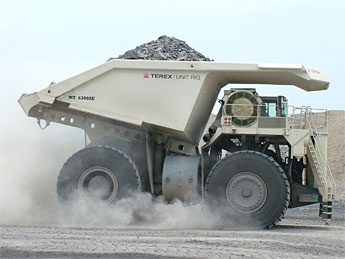Carriage Scenarios: Lead, Lift and Load
Details of carriage activities for materials at site to support mainstream works
CARRIAGE ACTIVITIES
Carriage activities on-site that support mainstream works of the project include lead, lift, loading and unloading. The lead and lift activities may be designated as scalable (like manual lifting, mobile cranes) if its quantification depends on quantity of main-stream work and as standby (like tower cranes, pumps) if it depends on duration of one or more main works.
- Scalable carriage activity is devised for each type of work such as masonry, glazing or rebars, in two modes: initial basic arrangement and arrangements for every certain additional distance. Initial arrangement activities are measured by the same unit as main stream activity and additional arrangement are scaled by the distance of transit. This approach facilitates takeoff for carriage to be quantified in terms of the quantity of main work, rather than the composition of main work.
- Stand-by carriage activity is devised by the type of equipment, also in two modes: base module and extension segments. The number of equipment to be mobilized for long lead is subject to experienced judgement and logistic design. Stand-by carriage is often supported by manpower for hauling, loading, unloading material to and from the carrying equipment; this manpower being scalable.
LEAD AND HAUL
WORK DEFINITIONS
Lead of raw materials is required in sites with limited access, either regularly for each supply or intermittently for two or more cumulative supplies. The effort and productivity is by far, comparable in both arrangements, although mobilization costs may differ. Predetermination of raw material lead is cumbersome and it is seldom important in scheduling, tracking or billing.
Haulage of intermediate products such as fresh concrete and prefabricated items from yards is integral to production of respective work.
Movement of materials into and out of site, such as haulage of earth, dismantled materials occurs either integrally to the respective activity or at intermittent intervals. Integral haulage is a preferred approach because it clears work front and does not require separate scheduling and tracking. As unit cost of either method remains the same, it is advisable to consider haulage as part of the relevant work wherever applicable. Deferred haulage is sometimes required when mobilization of hauling equipment is not justified due to lesser haul volume. In cases where discrete haulage sessions are required by choice or otherwise, it could be handled real-time by detailed inspection report.
LEAD/HAUL METHODS
The simplest haulage scenario consists of one person carrying 10-50kg over relatively short distance (Individual carriage) or 50-200kg by containers such as wheel barrow (Barrow carriage). Long, wide or large material may require more than one person to haul, despite weighing lesser (Large Manual Carriage). Manual carriages are scalable and manpower requirement is theoretically calculated with quantity and distance to be transported. Effort factors may be defined for the size and shape of the material to be carried. Another scenario is transfer of materials along a chain of unskilled helpers (Chain Transfer). Output of the chain is [Parcel weight / Interval between parcels], whereas manpower required is dependent on the required length of delivery. Manual carriage is used raw materials and intermediate products.
Simplest mechanized haulage comprises of using a mobile crane or forklift on short distances. Both methods may be used for lead of raw materials – forklifts being suitable for regular packages whereas cranes are used for large-geometry handling jobs. Forklift and regular crane haulage may be quantified by equipment performance by weight. Crane haulages are additionally suitable for installations and erection; if so, cranes shall stand-by during erection, in addition to haulage. When stand-by time of crane is sizeable larger than haulage time, it is preferable to mobilize the crane for entire duration of the erection. In limited access sites, crane usage may not be feasible.
Lead by conveying systems such as pumps and chutes, are suitable for transfer of pumpable or flowable intermediate products. Although pumps are categorized by capacity, it should be ensured that the capacity matches the requirements of the job. It can be practically seen that pumps remain idle either when tasks that are pre-supply or post-delivery from the pump are slower than pump capacity. Besides, conveying pipelines are quantified by the length of conveyance and stands for as long as the pump. Therefore, it is advisable to model pump-conveyance by mobilizing the pump and required length of pipe over the duration of the respective work. Type of pump and length of pipe will be selected during take-off. Similar principles also apply for conveyor systems.
On longer distance, haulage is done with ordinary or special purpose trucks, in combination with loading/unloading arrangements. Trucks have designated capacity and the throughput of truck haulage can be estimated from the haulage distance and weight to be transferred. It should however be noted that where the weight of the transported material or part thereof is a fraction of the truck capacity, the truck requirement needs to be rounded to next whole number.
LIFTING
SCALABLE LIFTING METHODS
Manual lifting involve carriage of packable items by single individual (Individual carriage), large items by multiple individuals (Large Manual Carriage) or relay of packages by chain of individuals (Relay Transfer). Manpower requirement depends on quantity and height of lift, and is scalable for available duration. Effort factors may be used for distinct size and shape of the material to be carried. Similarly, mobile crane is also a scalable lifting technique, suitable for one-off lifting requirements, and quantified by equipment performance by weight. Crane holding time during actual erection assembly should be accounted in addition to crane operation time.
STANDBY LIFTING METHODS
Most efficient lifting methods such as material hoists, winch cranes, tower/mast cranes, pumps, conveyors, chutes operate on plant. These equipment remain idle for long durations, and are active for limited time. Short-term standby machines such as pumps and derricks are mobilized for duration of relevant works and quantified by the height of lift. Winch cranes, hoists and mast cranes are permanently mobilized over duration of multiple works at multiple levels. The location of winch jib crane keeps shifting to the topmost floor, incurring shifting costs at every stage. Material hoists and tower/mast cranes requires mobilization of extension segments for higher reach as construction progresses.
It must be noted that standby lifting methods are to be supplemented by manpower to move material to and from the lifting machinery in addition to the machine operators. This manpower is scalable and dependant upon the quantity being moved, even though it remains independent of the height being lifted. Similarly, scalable lifting methods may be supplemented by access ladders or scaffolds, that remain in plant.
WORK DEFINITIONS
Unlike lead, lift is significant in scheduling and billing. Its costing being dependent on the respective elevation of lifting at each stage of construction, cannot be generalized for entire project. Therefore, it is necessary to model lifting with sufficient detail.
Lifting of raw materials is either a regular work for each supply or intermittent work for two or more cumulative supplies, the effort being similar in both. Lifting of intermediate products such as fresh concrete, mortar and prefabricated items from yards is integral to production of respective work. It is most effective to consider scalable lifting as integral to the respective work, because takeoff of both works can be related. Thus, lifting of raw materials for different activities such as masonry, glazing, rebar etc are separately characterized. The unit of measurement may be same as unit of activity if the lifting activity is further classified based on height of lift such as 3-6m or 6-9m. Otherwise, the lifting activity may be measured in unit of lifting activity multiplied by the length of transit.
If the cost of scalable lifting, such as manual carriage, can be reasonably estimated based on quantities of work and compared with mobilization cost of holding lifting equipment, such as builders hoist, on plant, it is possible to make a calculated decision between scalable and stand-by lifting. It is currently impossible to switch between the two types of lifting in real-time because of conflict in unit of takeoff: scalable lifting is measured in unit of respective work whereas standby lifting is measured in duration of the work. The decision between both types of lifting shall be made during planning.
LOADING/UNLOADING
LOADING/UNLOADING AS PART OF WORK
When loading/unloading is part of a work (such as dismantling, earthwork) the same has to be taken into account in analysis. Rheotropic materials such as earth and aggregates are unloaded by tipping of trucks. In other cases, loading/unloading is done by manual/mechanical means in following types:
1. Rheotropic loading: Loaders are characterized by a fixed loading output.
2. Ordered loading/unloading: Manpower or forklift requirement for uniform or packed materials such as blocks, bricks, cement bags, bundles, tiles, cloth, rolls etc., are ascertained using performance statistics based on weight.
3. Large items loading/unloading: Manpower or crane requirement for loading/unloading of large items such as rolled sections, scantlings, boards, installations, fittings etc. cannot be generically associated with weight. Workforce may be defined for the time required per truck-load.
In all cases, the truck remains on stand-by during the duration of loading and unloading
LOADING/UNLOADING RAW MATERIALS
In most cases, loading and unloading for supply of raw materials is vendor-scope. Sometimes, unloading is included by vendor or regional laws to site-scope. Unloading costs can be built into the project cost by modelling it as a work for such cases of procurement, although cumbersome. Alternately, unloading workforce can be calculated as a separate report in procurement and added to project cost and reconciliation.
Post a Comment
You must be logged in to post a comment.









